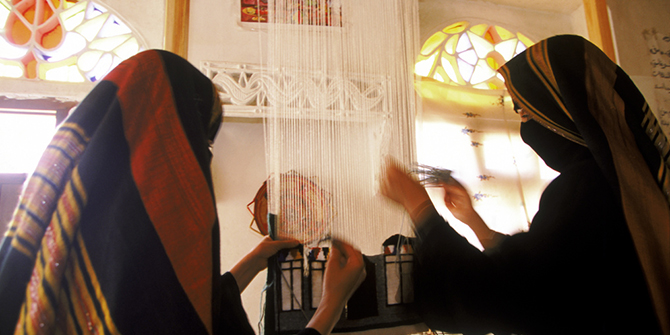by Stean Auguste Tshiband

The 16th Task Force on Population Movements (TFPM, a working group supporting the inter-cluster coordination mechanism in producing regular analyses regarding displacement and needs) Report indicated that around three million people are still displaced or continue to suffer from displacement-related vulnerabilities as the result of the March 2015 escalation in Yemen. Among them, around 2 million remain displaced across 21 Governorates and close to one million have returned to their locations of origin across 20 Governorates. A large majority of the displaced in Yemen live either with host families or in rented houses, and most of them survive on assistance from communities, host families, and humanitarian organisations. Less than a quarter of the displaced have been living in camp-like settings (collective centres and spontaneous settlements). The number of people who have been displaced for more than two years is estimated at 1.4 million, and those displaced for more than a year account for 1.8 million among the total number of displaced.
Around 44 percent are displaced within their Governorate (with 56 percent outside their Governorate) and 11.9 per cent within their district of origin.
Complexities of internal displacement and limitations of responses in Yemen
Yemen presents many particularities when it comes to internal displacement. These particularities also dictate the way responses and solutions are implemented. Unlike many countries where the majority of IDPs live in camps, most Yemeni IDPs live with relatives, in the community, or in rented houses. Responding to the crisis is already extremely challenging in Yemen; addressing displacements is even more complicated. So far, the response to displacement has focused on IDPs in collective centres and spontaneous settlements. IDPs living with host families have been have not systematically been targeted via any form of response. The set-up also makes integrated response quasi-impossible. The fragile context, access, logistical challenges and the absence of a coherent government plan have made any efforts to find solutions to displacement even more difficult.
The Executive Unit for IDPs, the government body mandated to implement the National Policy for Addressing Internal Displacement in the Republic of Yemen, lacks resources, leaving the burden of addressing the needs of IDPs to host communities and to national and international humanitarian organisations. The above policy and resulting plan, based on the Guiding Principles on Internal Displacement and articulated around three goals, aims to (i) protect people from displacement and ensuring preparedness for displacement, (ii) provide assistance during displacement, and (iii) create conditions for safe, voluntary and durable solutions to displacement.
The fragile context, restricted access, and limited resources have obliged humanitarian organisations to focus their interventions on critical life-saving humanitarian action, with little assistance in enhancing resilience and building foundations for longer-term solutions to displacement. As much as the current assistance contributes to saving the lives of the most vulnerable, its downside is that it contributes to creating, reinforcing, or perpetuating displacement-related vulnerabilities. This leads to a vicious circle of mutually reinforcing elements: displacement-related vulnerabilities, need for relief assistance, and long-term aid dependency. IDPs located around large agglomerations such as Sana’a and Aden enjoy freedom of movement and would potentially develop some form of self-reliance for basic needs if they were economically empowered with livelihood assistance.

On the solutions front, as most returnee families returned to their location of origin without the required assistance, they continue to carry displacement-related vulnerabilities. These vulnerabilities are compounded by chronic poverty and, in some instances, many cycles of displacement.
Addressing Displacement in Yemen: Promoting Solutions
Addressing internal displacement in Yemen is often confronted with contextual, logistical, security and policy-related challenges. Though the least visible, the latter challenges and their interpretation also stand in the way of efforts to address vulnerabilities related to internal displacement. The 2009 UN Secretary-General’s Report on Peacebuilding in the Aftermath of Conflict and the UN Secretary General’s Decision on Durable Solutions created a pathway for long-term solutions for refugees and internally displaced persons. Yet their application remains subject to various interpretations. Reference to the ‘aftermath of a conflict’ is always seen as a precondition for actors to engage in interventions aimed at supporting sustainable, safe, and dignified responses to internal displacement, and has become a hindrance to engaging in durable solutions before the commencing of the ‘aftermath’. IDPs are then viewed as passive recipients of relief assistance, whose return to normal life will depend on the political resolution of the conflict. The UNHCR’s 2015 ‘Global Trends: Forced Displacement in 2015’ assesses the length a family typically spends in displacement; for instance, a child born in displacement will most likely reach his/her maturity still displaced.
A change of policy and thinking was thus advocated in a think piece produced by the Center for International Cooperation in collaboration with OCHA, UNDP, UNICEF, WFP and the World Bank Group. The document aimed at enhancing humanitarian-development cooperation in addressing protracted displacement in crisis contexts such as Yemen. It proposed some changes in the way the needs of IDPs and refugees are viewed: not as separate from development goals, but so as to ensure their welfare as a core part of the Sustainable Development Goals’ (SDGs) commitment to ‘leave no-one behind,’ requiring joint analysis and multi-year planning and engagement from development and humanitarian actors to achieve collective outcomes.
More than a change of policy, it is the overall approach to internal displacement that needs to change. The following are a few steps that may be applicable to the context of Yemen:
- Theorising solutions to apply from the very beginning of displacement: Most often, humanitarian and development actors envision solutions within the three identified ‘durable solutions’. For most IDPs, the minimum conditions necessary for ‘durable solutions’ will take a long time to reach. Meanwhile, they require all the necessary assistance to return to some form of normal life. From the beginning of the crisis, intermediate (alternative and transitional) solutions will need to be envisioned as steps towards durable solutions.
- Alternative solutions should focus on reducing the displacement-related socio-economic vulnerabilities of IDPs so as to enhance their economic self-reliance, also contributing to the economy of the community, village, or society during displacement. Such economic empowerment will not only reduce dependency on relief assistance and reduce humanitarian needs, but will also contribute to the enhancement of social cohesion among the displaced and bring them back on the path of sustainable development. Specific income-generation opportunities that can be sustained and continued (after return, settlement elsewhere or local integration) targeting IDPs (and host/surrounding communities) are key to achieving alternative solutions.
- Although no intention survey has been conducted in Yemen, there are indications that return remains the preferred solution for most IDPs, whether in a private setting, in collective centres, or in spontaneous settlements. Minimum conditions conducive to durable solutions being remote for the majority of IDPs, ‘transitional solutions’-approaches will help [re]integrate IDPs. Local integration or settlement elsewhere could be a transitional solution for IDPs without immediate prospects for return.
- Enhancing humanitarian-development cooperation around durable solutions, starting with addressing longer-term recovery and reintegration needs of close to a million returnees. Coherent, coordinated and consistent interventions bringing humanitarian-development actors together building foundations/fostering the [re]integration of millions of IDPs is necessary to realise sustainable solutions to displacement in Yemen.
This is an abridged version of a paper given at a conference on Responses to Displacement in the Middle East, held at the LSE on 30 November 2017. See below for the full list of papers.
 Stean Auguste Tshiband is currently serving as Early Recovery Coordinator in Yemen with UNDP. He coordinates the Early Recovery Cluster and supports the Humanitarian Country Team in linking relief and development. He has extensive experience in post-conflict recovery, conflict prevention, Protection of Civilians, Human Rights and International Humanitarian Law, having served in corporate business, INGOs, enterprise business, UN DPKO missions and UNDP. He tweets at @steantshiband
Stean Auguste Tshiband is currently serving as Early Recovery Coordinator in Yemen with UNDP. He coordinates the Early Recovery Cluster and supports the Humanitarian Country Team in linking relief and development. He has extensive experience in post-conflict recovery, conflict prevention, Protection of Civilians, Human Rights and International Humanitarian Law, having served in corporate business, INGOs, enterprise business, UN DPKO missions and UNDP. He tweets at @steantshiband
In this series:
- Introduction by Zeynep Kaya
- The Politics of Return in post-ISIS Iraq by Kyra Luchtenberg
- Going Back or Staying Better: Processes of Return After Displacement due to ISIL by Nesreen Barwari
- Returnees in Syria: Sustainable reintegration and durable solutions or a return to displacement? by Schadi Semnani
- Iraq after the Islamic State: Displacement, migration and return by Irene Constantini
- Displaced and on the Move Again: Decision-making among IDPs who migrate to Europe by Megan Passey
- Violence, Insecurity and the (Un)making of Rukban Camp by Suraina Pasha
- Between International Influence and Domestic Politics: The case of the refugee control policy towards Syrian refugees in Lebanon by Zad El Hage Sleiman
- Fleeing Home at Home: Internal Displacement in Homs, Syria by Ammar Azzouz and Irit Katz
- A Phenomenological Exploration of the Gendered Vulnerabilities of Internally Displaced Syrians by Jaclynn Robinson
- Chaos and Fear: Governmental strategies to hinder national and international humanitarian responses to internal displacement in Turkey by Eva Jones
- Administrative Violence and Palestinian Displacement in West Bank Area C by Mustafa Fatih Yavuz
- Local Integration in the Context of Protracted Displacement Inside Syria by Simon Verduijn






